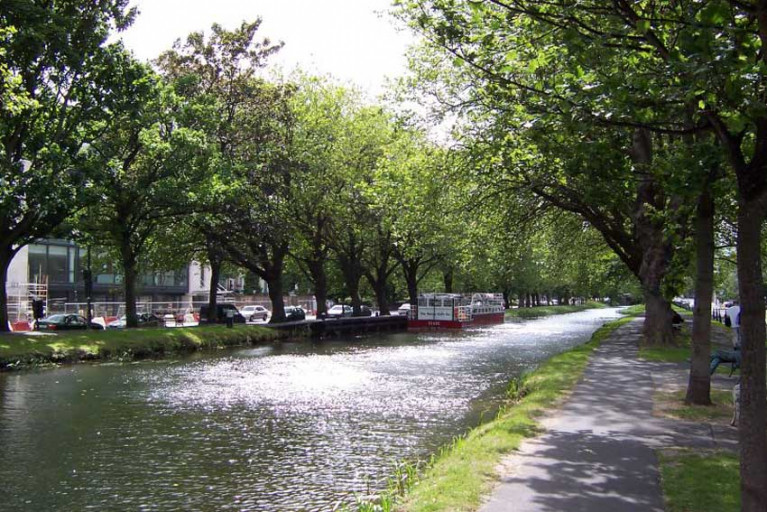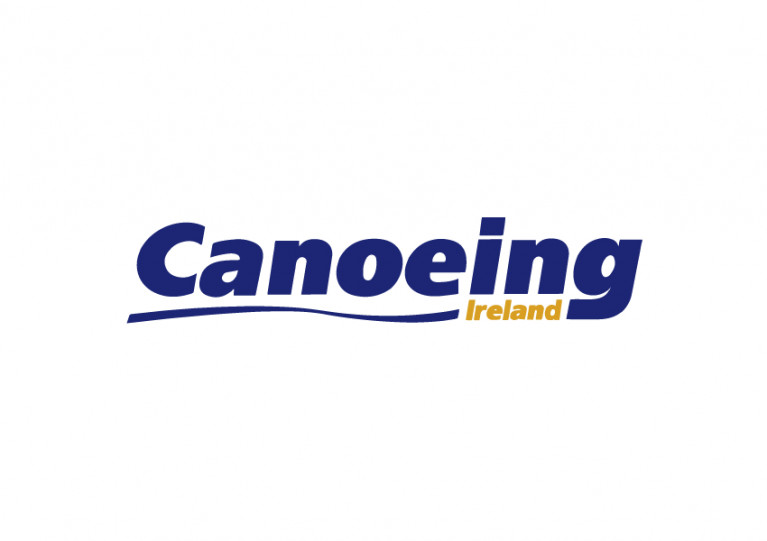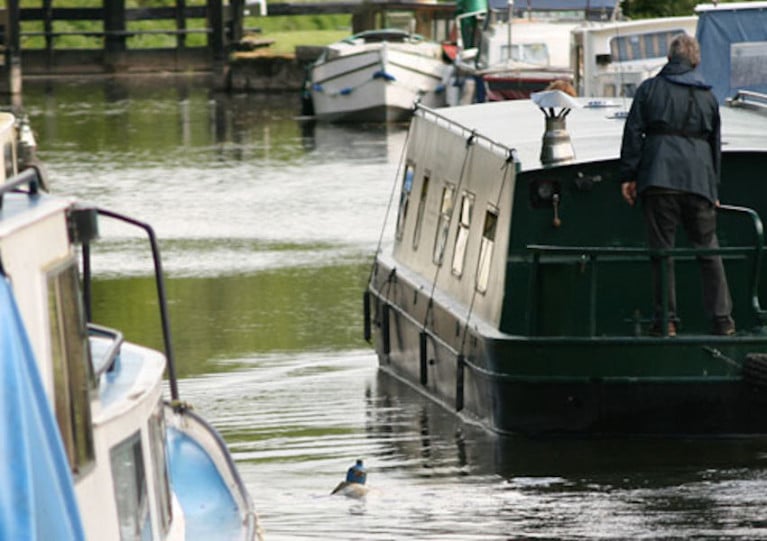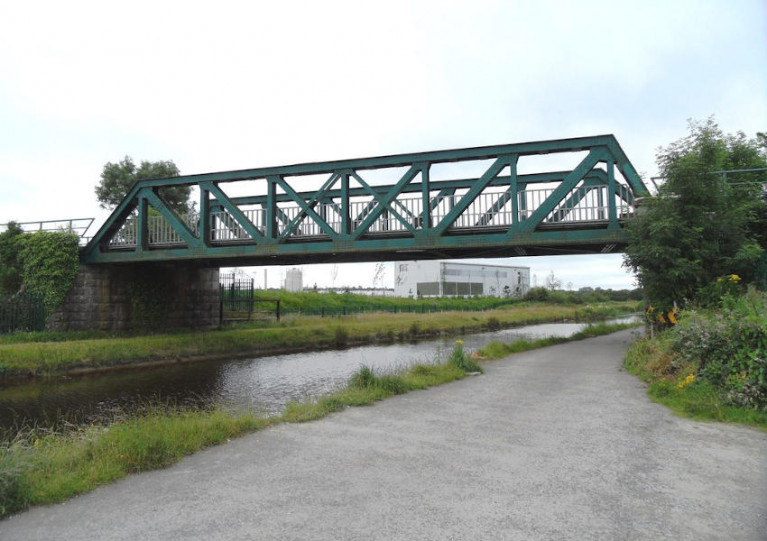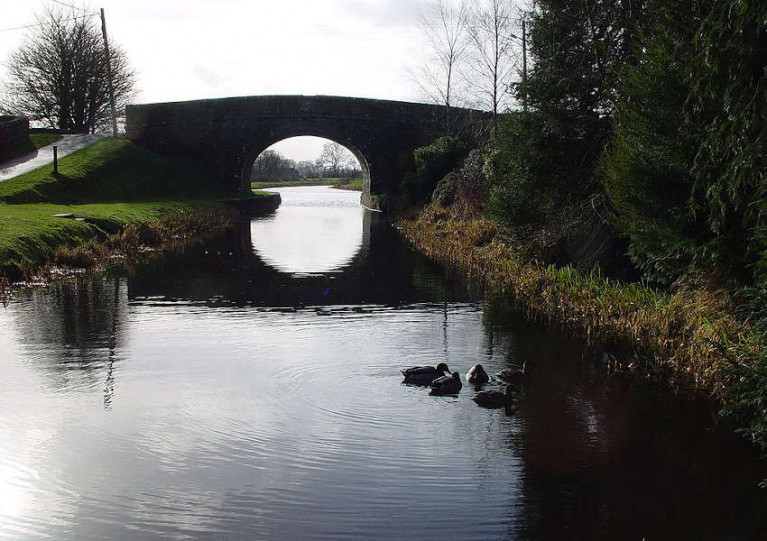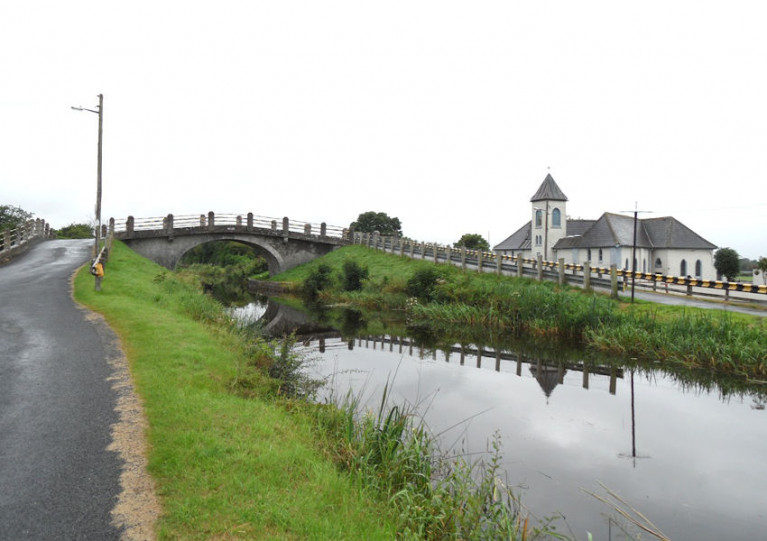Displaying items by tag: Grand Canal
Waterways Ireland has issued an update for masters and owners regarding boat passage arrangements in or out of Dublin on the Grand and Royal canals in 2021.
Movements in or out of the city will continue to be organised by prior arrangement to take place as a single movement in one day.
Boaters will be facilitated to travel the system if their passage is considered to be safe by Waterways Ireland and they have the valid permit(s) for mooring and passage.
In order to plan the necessary lock assistance for movements east of Lock 12 on either canal, masters are required to contact the Waterways Ireland Eastern Regional Office by email [email protected] or 01 868 0148 prior to making passage.
At time of making contact, masters are asked to provide the following details:
- Length, beam, water & air drafts of your craft (provide approximates if don't have exact dimensions)
- Phone/email contact details
- Permit number and expiry date of current canal permit
On the Grand Canal, a minimum of two days’ notice prior to planned passage must be given and, with the exception of pre-arranged events, a maximum of two boats per day will be taken through the locks, travelling either east or west. In certain circumstances, eg for slower or larger barges, the limit will be one boat per day.
Due to periodic anti-social activity along some of canal route into Dublin, boat passage will also not be possible in certain weather conditions and at weekends over the late spring and summer period. This can be planned for at time of making contact, and suitable arrangements for passage made.
On the Royal Canal, repairs and upgrades are ongoing to Spencer Dock Sea Lock so boat passage through here remains suspended at this time and no bridge lift dates have been set for Newcomen Lift Bridge. Should there be updates to this position, details of these will be advised in a separate notice.
Masters and owners are also reminded to ensure that they have the following before making the passage through the city locks on either of these inland waterways:
- Adequate fuel on board
- Competent and adequate crew to operate the boat and locks (minimum crew of three)
- A lock key on board their boat
- Mooring lines of adequate length to handle vessel through a lock (approx.15m length)
- No known mechanical problems with their boat
Waterways Ireland reserve the right to postpone passage to another day if all of these are not in place.
Passages can be arranged in this boating season from June until the end of October. Also note that aquatic weed is generally more prevalent as the season progresses which can hamper passage.
Boaters will be facilitated as far as practicable although Waterways Ireland cannot guarantee that passage will be possible on every planned date. Early contact will greatly assist planning and facilitate the making of the necessary arrangements.
Waterways Ireland advises masters and owners of vessels that due to technical difficulties, the lifting bridge on the Grand Canal’s Barrow Line at Monasterevin cannot currently be opened for navigation traffic.
Staff are working to put the bridge back in operation, and the cross-border body for Ireland’s inland waterways says it hopes to issue an update by the coming weekend.
Barrow Line Lock at Athy Closed for Emergency Repairs
Waterways Ireland advises masters and owners of vessels that Lock 26 on the Barrow Line of the Grand Canal, at Athy in Co Kildare, has been closed to navigation until further notice for essential maintenance and repairs.
Waterways Ireland advises all masters of vessels and inland waterways users of the Shannon Navigation, Shannon-Erne Waterway, Grand Canal, Royal Canal, Barrow Line and Barrow Navigation that these waterways will reopen from Monday 10 May in line with the latest relaxation in pandemic restrictions.
On the Shannon Navigation and Shannon-Erne Waterway, the winter mooring period will end on this date and the five-day mooring rule will be in force.
Locks on will be open normal summer hours (9am to 8.30pm on weekdays, 9am to 6pm on Sundays on the Shannon Navigation; 9am to 8pm daily on the Shannon-Erne) and service blocks will also reopen.
An exception applies to the lock gates at Tarmonbarry on the Shannon Navigation, which remain closed for continued emergency repair works until Friday 28 May. Passage through the lock will not be possible during this period but an alternative route via the Camlin River is available.
No lock passage tolls will be collected in order to facilitate social distancing. Note that a smart card is required to operate locks on the Shannon-Erne Waterway and these can be purchased from Waterways Ireland’s online shop or from designated retails outlets along the waterway.
Shannon Navigation lock-keepers are available at the following phone numbers:
- Lough Allen Canal - 071 964 1552
- Clarendon Lock - 071 966 7011
- Albert Lock - 071 963 7715
- Rooskey Lock - 071 963 8018
- Tarmonbarry Lock - 043 332 6117
- Athlone Lock - 090 649 2026
- Poolboy Lock - 090 964 4938
- Victoria Lock - 057 915 1359
- Portumna Bridge - 090 974 1011
- Ardnacrusha - 061 344 515
- Sarsfield Lock - 087 797 2998
Anyone who require assistance along the Shannon-Erne Waterway, meanwhile, is directed to contact the following:
- Ballyconnell Waterway Patroller - 087 260 3662
- Kilclare Waterway Patroller - 087 260 3663
Normal summer hours will also apply to locks on the Grand Canal, Royal Cabal, Barrow Line and Barrow Navigation.
Electricity and water services have been reconnected at all Waterways Navigations in the Republic, and normal pump-out facilities are available for boaters.
Visitors to the waterways are urged to be aware of other users and continue to observe social distancing protocols, keen a distance of at least two metres from others.
Waterways Ireland also notes that water levels are becoming low due to the recent period of low rainfall. In addition, normal maintenance weed-cutting of navigation channels has been late in starting due to the ongoing restrictions, so additional weed growth can be expected in the navigation channels.
Masters are asked to contact the local waterway patroller for updated information if wishing to navigate a particular area.
Dublin Canal Boat Restaurateurs Speak Out Over Takeaway Ban
Canal-boat restaurant operators on the Grand Canal in Dublin have spoken out after they were banned from providing takeaway meals amid the current pandemic restrictions.
According to The Irish Times, at least one eatery is out of pocket by thousands of euro after Waterways Ireland enforced rules that mean floating restaurants can only serve food while moving — and not when moored.
In a statement, the cross-border body for Ireland’s inland waterways said it understood that any boat-based business trading “at a fixed location” requires planning permission for that purpose.
But that doesn’t sit well with restaurateurs who argue that they should be allowed to operate on the same terms as their land-based counterparts — and that Waterways Ireland has been “deeply un-empathetic” about their situation.
“All across Ireland restaurants that can’t open have been offering takeaway, and the Government told local authorities that could be done without planning permission,” Sam Field Corbett told The Irish Times, which has much more on the story HERE.
Caution Advised on Grand Canal in Celbridge For Canoeing Ireland Selection Event This Saturday
Waterways Ireland advises that a Canoeing Ireland selection event will take place this Saturday 3 April on the Grand Canal at the Celbridge Paddlers Canoe Club–Alymer’s Bridge area.
This event is part of the Tokyo Olympic and Paralympic qualification pathway and has been deemed an essential activity by Sport Ireland.
Masters of power boats are requested to navigate with due caution and obey all instructions from event stewards.
Inland Barge Hire Firm Seeking Tenders for New Passenger Vessel
A Co Laois barge hire company is seeking tenders to build a new passenger vessel for use on the inland waterways.
Barrowline Cruisers in Vicarstown wants to commission and fit out a 46ft passenger barge or boat with a capacity of 36 passengers plus crew, and with a galley snack bar and toilets on board.
“The barge will ply the Grand Canal/River Barrow and the waterways of Ireland,” the company states. “It will do passenger trips and private functions. All fittings to be of a high standard.”
The firm estimates a seven-month build time for the project, which is subject to grant funding.
For more details on the tender, which is open for submissions until 5pm on Friday 9 April, see the eTenders website HERE.
Essential Maintenance on Rail Bridge Over Grand Canal at Tullamore
Waterways Ireland advises inland waterways users that essential maintenance works are taking place on the rail bridge over the Grand Canal west of Tullamore until further notice. The maximum safe air draft for passing vessels is 3.2m (10.4ft).
New Infrastructure for Waterways in €63M Greenways Funding Allocation
Refurbishment of the Longford Canal and the extension of the Grand Canal Greenway from Daingean to Edenderry are two of the projects that will be funded from a €63.5m allocation for greenways in 2021.
Transport Minister Eamon Ryan and Minister of State Hildegarde Naughton today (Monday 9 November) confirmed the funding for a range of greenways across the country.
Minister Ryan said the funding “is the highest single year amount ever allocated to greenways”.
“Indeed, it nearly equals the total amount originally allocated for the four years 2018-2021 (€53m) and shows the commitment of this Government to providing a step-change in the way in which we fund walking and cycling,” he said.
Among the inland waterways projects in the list is the €172,000 refurbishment of the Longford Canal spur of the Royal Canal, with improved infrastructure being provided along its cycleway.
In Co Offaly, €3.1 million has been allocated to fund the extension of the Grand Canal Greenway from Daingean to Edenderry, with another €1.66 million for the stretch between Daingean and Lough Boora, west of Tullamore.
“By the end of next year it will be possible to cycle the greenway the whole way from Edenderry to Lough Boora, over 50km worth of cycleway,” Minister Ryan said.
Minister Naughton added that a new greenway bridge across the River Shannon in Athlone would be funded from a €8.1 million allocation to the Galway-to-Dublin Greenway.
Towpath Closure On Grand Canal In Co Offaly
Waterways Ireland advises all users of the Grand Canal in Co Offaly that the southern tow path from Plunkett Bridge at Pollagh to Turraun — half-way between Tullamore and Shannon Harbour — will be closed from next Monday 12 October until 1 March 2021 for the construction of a new path and cycleway along that stretch of the inland waterway.


























